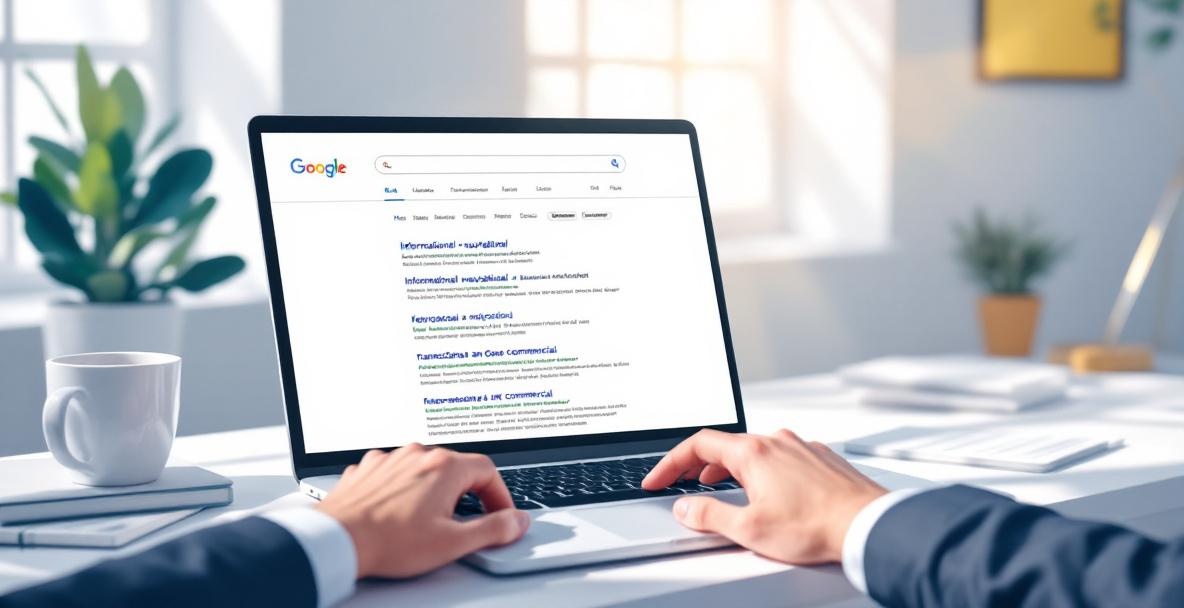Stop wasting time with keyword stuffing when you can speak directly to your readers. When you create content that truly connects with your audience, you'll notice more visits, better engagement, and higher conversion rates. At SeoFlow, we've seen firsthand how matching your content to what people really need can boost your site's performance. Let's dive in and see why paying attention to search intent makes all the difference.
Let's Break Down Search Intent

What Does Search Intent Really Mean?
Search intent is simply the reason someone types a query into a search box. It is all about what they hope to find-whether it's helpful information, a product to buy, or a specific website. When a person searches, they are looking for answers, and your job is to understand that need. Knowing what readers are after helps you write content that matters.
Search engines have become much better at catching the details and context behind a search. Over time, updates have taught them to see the real meaning behind words and phrases. Recent research on large language models has proven that search engines prefer material that truly answers user questions. This means your writing must deliver what people are looking for.
Why It Pays to Stick to What Readers Seek
When your content matches what people need, it naturally rises to the top of search results. Search engines give a boost to pages that meet visitors' expectations, which can help your site rank higher. This simple step sets you apart from the competition.
Better alignment with search intent also means that visitors stay on your page longer. When people quickly find the info they need, they explore more and interact with your site. This friendly approach sends a clear signal to search engines that your page is on target.
Most of all, delivering exactly what your audience seeks builds lasting trust. Regularly providing clear and useful content transforms casual visitors into loyal readers. In the long run, this trust shows up as better conversions and a stronger reputation.
The Different Flavors of Search Intent

When People Are After Information
Many searches start from a need to learn. When users type words like "how," "what," or "why," they want clear explanations and simple answers. They look for simple guides and practical tips instead of a hard sell. Easy-to-understand guides and straightforward tutorials work best in these cases.
If you answer these questions well, your readers will feel understood. Break down complex ideas into small, clear steps and use examples they can relate to. Your goal is to build trust and show you have the answers-not to push for a quick sale.
When Visitors Know Exactly Where to Go
Sometimes, users already know their destination. They search for a specific site, like "SeoFlow login" or "Nike online store," because they have a clear goal in mind. These searches leave little room for guesswork.
Make sure your pages are easy to find and navigate. A clear layout with simple menus and labels helps users reach the spot they expect. Even when people are comparing options, offering straightforward comparisons can invite them to explore your site.
When Users Are Ready to Take Action
When someone is on the brink of taking a step-like making a purchase or signing up-they tend to use specific keywords such as "buy," "discount," or "order." This readiness shows that they have done their research and are now ready to act.
For these visitors, your page needs to convince them quickly. Provide clear details, friendly reviews, and direct calls to action so they can complete the deal without any fuss. A fast-loading page and smooth process make all the difference for people ready to convert.
Making Sure Your Content Hits the Mark

Digging Into Research and Understanding Your Audience
Getting your content right starts with solid research. Look at what appears in search results when you use your target words. Notice if there are detailed guides, comparison pages, or simple explanations. These clues tell you what both search engines and readers appreciate.
Pay attention to elements like featured snippets and "People also ask" sections. They offer hints about the answers your audience expects. Study how your own pages perform and use that feedback. Regular research and analysis can help you adjust your strategy for the best results.
Writing Content That Truly Connects
Once you know what your readers need, it’s time to write in a way that speaks directly to them. For questions that need clear guidance, lay out your ideas step by step and cover related points too. Simple language, clear examples, and a logical order make it easier for them to understand.
If your visitor is looking for a specific page or ready to act, design your site so everything is easy to find. Ensure your calls to action are bold and unmistakable. Clear and effective writing builds trust and makes people want to stick around.
Watching, Tweaking, and Staying Flexible
Trends change, and so do the ways people search. It helps to check in on your content every so often. Look at metrics like website visits, time spent on a page, and whether people take action. These signs reveal if your material still meets their needs.
Sometimes a small tweak can boost your results, while at other times a fresh update is in order. Regular updates and a flexible mindset are essential for keeping your content dynamic and useful. Adjusting when needed helps you stay relevant as search habits shift.
Pitfalls to Avoid and How to Beat Them

Forgetting What Your Readers Really Need
A common mistake is to focus on what you want to say instead of what your readers need to know. This can leave your audience confused and your message off target. It is important to always see things from your reader's perspective.
Begin by asking simple questions: What problems are your visitors trying to solve? What answers are they looking for? Developing a clear picture of their needs helps you create user-focused content rather than guessing at what might work.
Keeping your readers in mind turns uncertainty into trust. At SeoFlow, we use regular feedback and thoughtful data to ensure every piece connects with real needs. This approach makes your content stronger and more valuable.
Keeping Keywords in Check
It is easy to overuse keywords in an attempt to rank higher, but that can make your writing feel forced. Search engines are smart enough to spot when keywords overwhelm a natural conversation. When language flows naturally, your message is clearer.
Instead of cramming in keywords, let them blend with your text smoothly. Use similar terms and related phrases that make sense. A balanced approach to keywords ensures your message remains genuine and engaging.
In Conclusion: Winning by Speaking Your Readers' Language
Getting your content to match what readers are searching for takes steady work, but the payoff is huge. When you deliver exactly the answers people are after, your site will perform better and your audience will trust you more. This approach not only boosts your rankings but also turns casual visits into lasting relationships.
Remember that understanding search intent is a journey. As topics evolve, it pays to review and update your work regularly. Keeping a pulse on your readers' needs means your strategy will remain fresh and effective.
Ready to transform your content strategy with better search intent alignment? Try SeoFlow today to automate your keyword research, content creation, and intent optimization. Our AI-driven platform takes the guesswork out of content strategy, helping you create content that truly resonates with what your audience is searching for.




